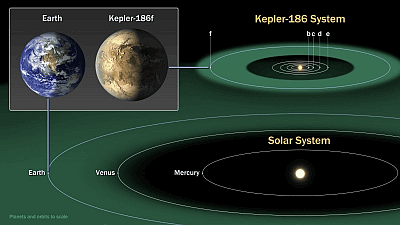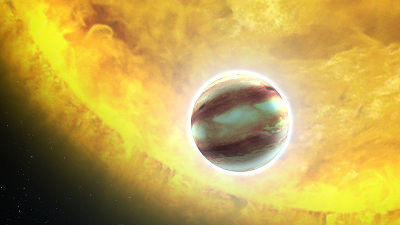It turns out that there are 3,500 stars in the galaxy resembling the sun and more than 100 stars similar to the Earth

ByNASA Goddard Space Flight Center
There is the Earth where we liveMilky Way(Milky Way Galaxy) is said to have collected hundreds of billions of stars, but the space telescope operated by NASAKeplerIt is clear from the data obtained from the data that there are more than 3,500 stars, similar to the sun, which are the center of the solar system, and there are at least 100 earth planets suitable for the existence of life. This is the result of investigating a small part of the area and it is far from the enormous data of the vast galaxy as a whole. As future investigations progress, it may lead to the discovery of more types of planets.
NASA Kepler Results Usher in a New Era of Astronomy | NASA
http://www.nasa.gov/content/nasa-kepler-results-usher-in-a-new-era-of-astronomy/index.html
New Kepler analysis finds many Earth-like planets; total 3,500 exoplanets | Ars Technica
http://arstechnica.com/science/2013/11/new-kepler-analysis-finds-many-earth-like-planets-total-3500-exoplanets/
This research result has been held at Ames Research Center of NASA from Monday 4th (Monday) to 8th (Friday)Kepler Science Conference IIIt was announced in. at the same time,National Academy of SciencesIt is an agency magazineBulletin of National Academy of SciencesIn Kepler's observation data, unique research results have been announced that there are about ten stars receiving the same amount of light (= energy) as the earth from the stars.
For the existence of life in the universe, a planet with a rocky structure with moderate gravity with the presence of air and water, the distance that moderate heat and radiation will reach from the stars "Habitable zone"It is required to be present in the area indicated by green in the figure below. According to the results of this study, it is clear that there are many stars (Super Earth) whose diameter is twice the diameter of the earth in this area.

Kepler observes the change in brightness caused by "transit" where the planet traverses in front of a fixed star and its data is used to analyze the size of the planet and the distance to the star (sun). In the illustration below, you can see that the change in the brightness of the star caused by the planet indicated by the arrow crossing the star from the left to the right is displayed as a decline in the graph.

The CCD sensor mounted on Kepler is here. 42 CCDs of 2.25 million pixels (2200 x 1024) are mounted side by side and are used to measure the luminosity of stars.

This survey was discovered from the data observed in the direction near the Strait of Cygnus (Cygnus). The area shown white is the area observed by the CCD, and many stars are confirmed only in the area enlarged red.

And here is the scope of this survey for the entire Milky Way. It can be realized that it was a very small area by investigation of only the area shown in yellow.

Detection of a planet by this "transit" is possible only when the condition that "the satellite passes between the fixed star and the Kepler" is satisfied, and many cases that are overlooked are also occurring It is thought. From the research team at the University of California at Berkeley, the analysis results that 20% of solar type stars have global satellites have been announced, and when this is applied, there are 700 earths There may be a type satellite.
In August this year Kepler announced the end of the main mission because there is no way to recover the trouble that occurred in the attitude control system, but only data obtained in about four and a half years from the launch in March 2009 However, such results are known. Although there is no affirmation that "there is a star with life other than the earth", there are about enough materials to say that "it is not amusing to exist". Is there really any "encounter with the unknown"?
Related Posts:
in Science, Posted by darkhorse_log







